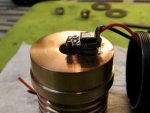Immo1282
0
- Joined
- Sep 4, 2018
- Messages
- 562
- Points
- 63
Hi all - I started drafting a specification for a new driver last night but I came to the realisation that since I'm extremely new to Lasers and the LPF - I have absolutely no idea what people would actually want 
So this is a "feature request" thread. What things from existing drivers are essential features, what other features would people like. I want to design something that's actually useful. Even if it's a redesign of something that's out there but generally unavailable, or something that's using obsolete components I'd happily dip my toes in.
If I end up designing something that people actually want to use I'll make up some panels of them and see if I can get a good price for PCBs and assembly of a small batch to send round to people for evaluation.
Things I'm specifically looking for guidance on:
So this is a "feature request" thread. What things from existing drivers are essential features, what other features would people like. I want to design something that's actually useful. Even if it's a redesign of something that's out there but generally unavailable, or something that's using obsolete components I'd happily dip my toes in.
If I end up designing something that people actually want to use I'll make up some panels of them and see if I can get a good price for PCBs and assembly of a small batch to send round to people for evaluation.
Things I'm specifically looking for guidance on:
- Dimensions & mounting holes etc. (Circular/rectangular?)
- Input & Output voltage range (Buck or Boost? Buck-boost?)
- Protection (reverse polarity, undervoltage, thermal, any others?)
- Kit form or assembled & tested?




